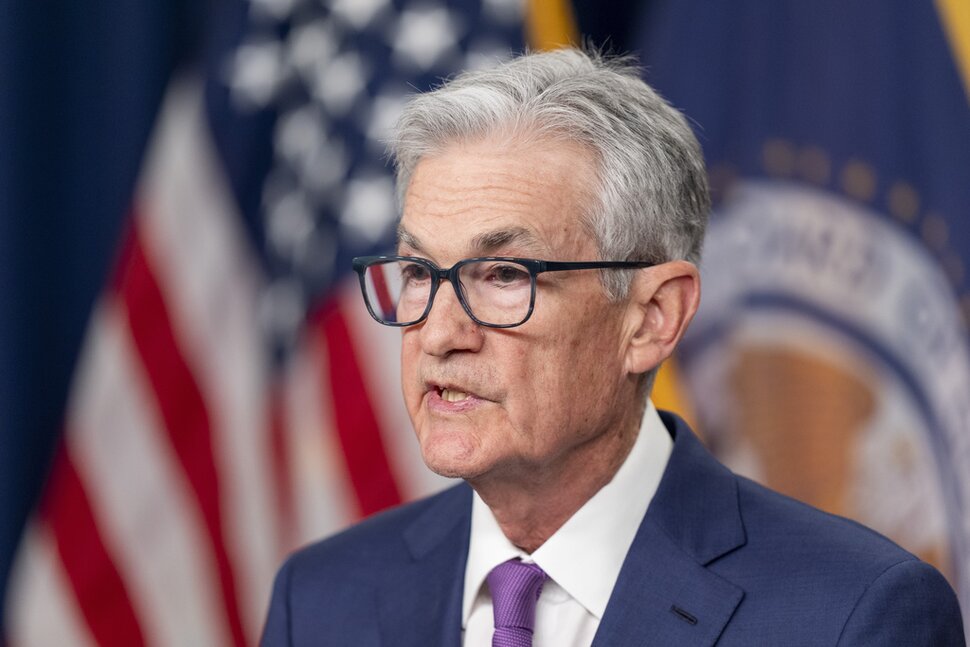
The central bank left rates unchanged, and its statement appears aimed at those market-watchers who wanted a timeline for when the Fed will cut rates.
The Federal Reserve on Wednesday did what everyone expected, holding interest rates steady for now.
But it also avoided saying anything about what it plans to do with rates in the future, dashing hopes for now that rate cuts are in the offing soon. Those looking for tea leaves will, however, seize on the exact phrasing of the Fed’s statement that may have offered a slight inkling the central bank’s monetary policy committee is adjusting its stance.
“The Committee judges that the risks to achieving its employment and inflation goals are moving into better balance,” the statement read. “The economic outlook is uncertain, and the Committee remains highly attentive to inflation risks.”
Before markets could go off to the races, the Fed also threw a cautionary comment into the statement.
“The Committee does not expect it will be appropriate to reduce the target range (of its overnight lending rate) until it has gained greater confidence that inflation is moving sustainably toward 2%.”
The move, widely expected, was nonetheless watched closely as the first meeting of 2024 for a sign that the Fed is nearing rate cuts. Most observers believe it will happen in late spring, but there is a small chance of a reduction in rates at the central bank’s next meeting in March. That now seems like wishful thinking.
Indeed, Chairman Jerome Powell seemed to take a March cut completely off the table in his comments at his press conference, saying it was “probably not the most likely case or the base case.”
Powell said that while inflation has come down in the past six months, with the core rate excluding energy and foods of the metric he most closely watches down to the Fed’s 2% target, he and the other members of its monetary policy committee wants to see a little more confirmation of the trend.
Over 12 months, the core rate has come down to 2.9%, he pointed out, adding, “We’re wanting to see more data. You’ve had six good months, but what is really going to shake out.”
At the same time, he suggested that if “we saw an unexpected weakening in the labor market that would certainly weigh on moving sooner.”
Markets sold off after the announcement, with the Dow Jones Industrial Average down a modest 70 points but that drop hastened as Powell spoke, with the average about 200 points lower by 3 p.m.
“I am not surprised the Fed maintained current rates,” said Greg Friedman, principal and CEO of Peachtree Group, a real estate investment firm. “I expect they will be very data-driven on when and if they will cut rates, but if they do, it will be in the latter half of the year.”
The Fed began raising rates in earnest in 2022 and they are now at the highest level in two decades.
But recent economic data – from the fourth quarter report on gross domestic product to last week’s benign reading on inflation – has supported the narrative of a resilient economy that has overcome the drag of high interest rates and a labor market that remains good but not so strong as to ignite wage inflation.
“The Fed has been very fortunate that the economy has not only held up, but also been pretty strong, while at the same inflation has gone down,” said Brian Henderson, chief investment officer at BOK Financial. “However, they do need to be careful about holding rates up too far, too long.”
Economists are predicting a slowdown this year. But that was also the case in 2023, when the majority forecast a recession that never materialized. The American consumer, the bedrock of the economy, has simply continued spending. Although credit card usage and balances have soared, causing some to say consumers are in financial duress, they have also seen their incomes rise and their assets such as homes and stocks go up.
“There’s been a record level of new credit card authorizations,” said Charlie Wise, senior vice president of research at credit reporting firm TransUnion. But, he adds, “Consumers have more income to pay their debt.”
Average credit card balances per person hit $6,400 at the end of 2023, Wise said, slightly higher than the peak of $6,300 seen in 2008 when the country was grappling with the Great Recession. But, accounting for inflation, “the level back then was clearly much higher.”
Those who have pressed for the Fed to cut early believe the overnight lending rate set by the Fed is too high, given that the most recent three-month reading on inflation favored by Powell is now around 2% – or the same as the target set by policymakers. Even housing costs, one of the laggards in showing signs of disinflation, are stabilizing or coming down, as in the case of apartment rents.
“Despite continued rate hikes, indicators like strong GDP growth, robust retail sales, and consumer spending suggest economic strength,” said Giacomo Santangelo, a Monster economist. “However, signs of strain are evident, with companies facing bankruptcy and individuals accumulating escalating levels of debt. A potential consequence of this economic landscape is a likely surge in personal bankruptcy rates in 2024. The delicate balance between monetary policy and its impact on various sectors underscores the challenges in navigating the economic landscape to achieve stability.”